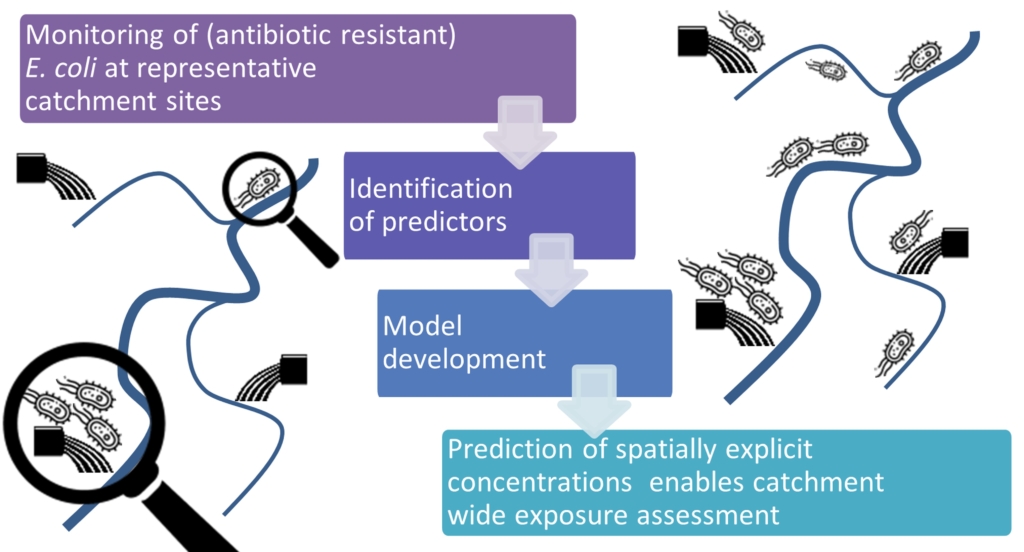Wastewater treatment plants (WWTP) are collection points of pathogens and resistant bacteria. Along the rivers that receive treated effluents from these plants, these potentially pose a threat to human health.
Dutch and German researchers participating in the MEDUWA Vecht(e) Interreg-project investigated the concentrations of two types of antibiotic resistant bacteria, namely extended-spectrum beta-lactamase producing E. coli (ESBL) and carbapenamese producing E. coli (CPE). By mapping the cross-border catchment area, the scientists were able to model and predict the concentrations of these bacteria in the whole catchment.
Through this combination of a monitoring campaign with bacterial modelling, they found that less than ten percent of the potential swimming sites in this catchment are predicted to have bacterialconcentrations exceeding recreational water standards. With respect to resistant bacteria, one swimming event can lead to uptake of up to 61 ESBL and less than one CPE, with higher uptake modelled for locations downstream WWTP.
Read more:
Heijnsbergen, Eri van, Gunnar Niebaum, Volker Lämmchen, Alicia Borneman, Lucia Hernández Leal, Jörg Klasmeier, and Heike Schmitt. 2022. “(Antibiotic-Resistant) E. Coli in the Dutch-German Vecht Catchment─Monitoring and Modeling.” Environmental Science & Technology. https://doi.org/10.1021/acs.est.2c00218.
